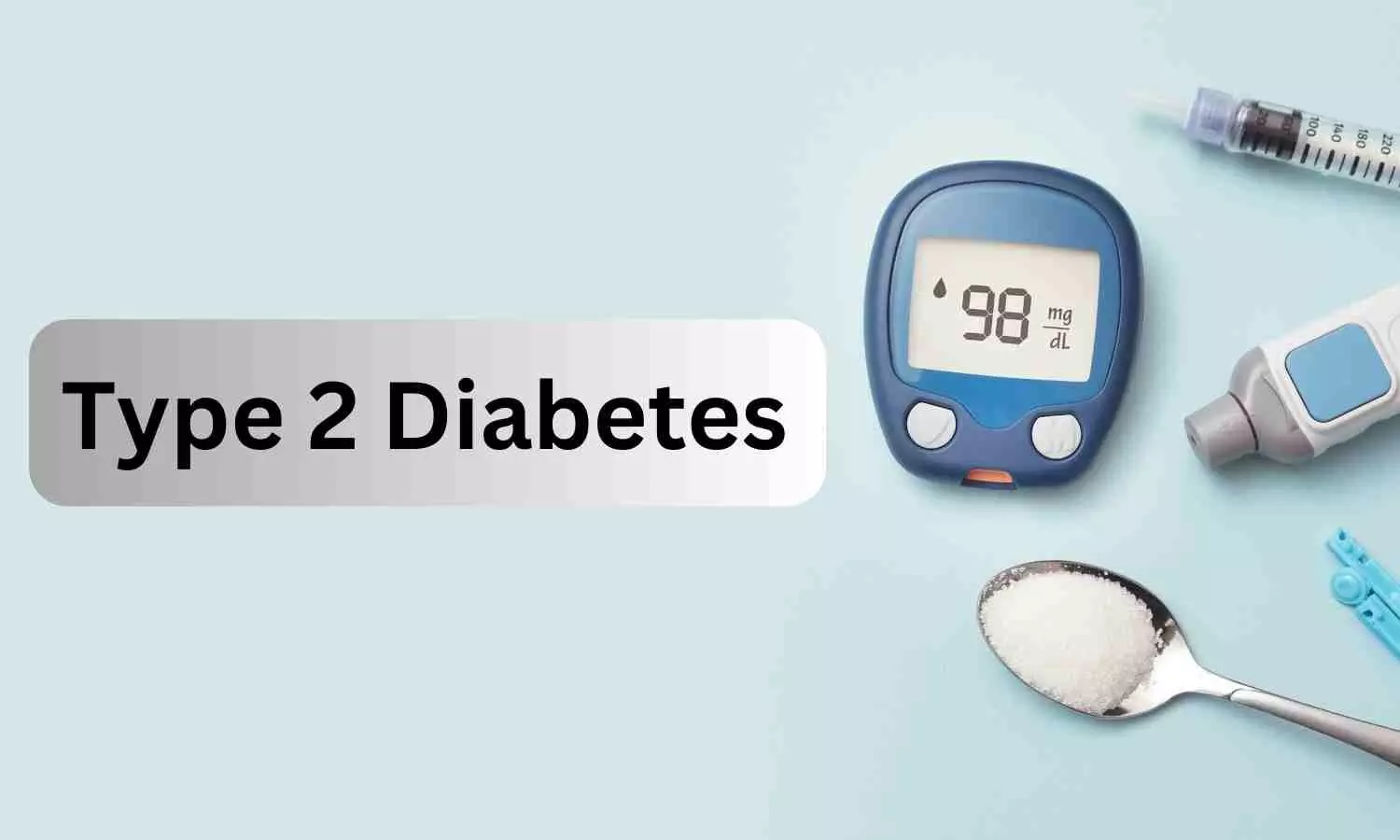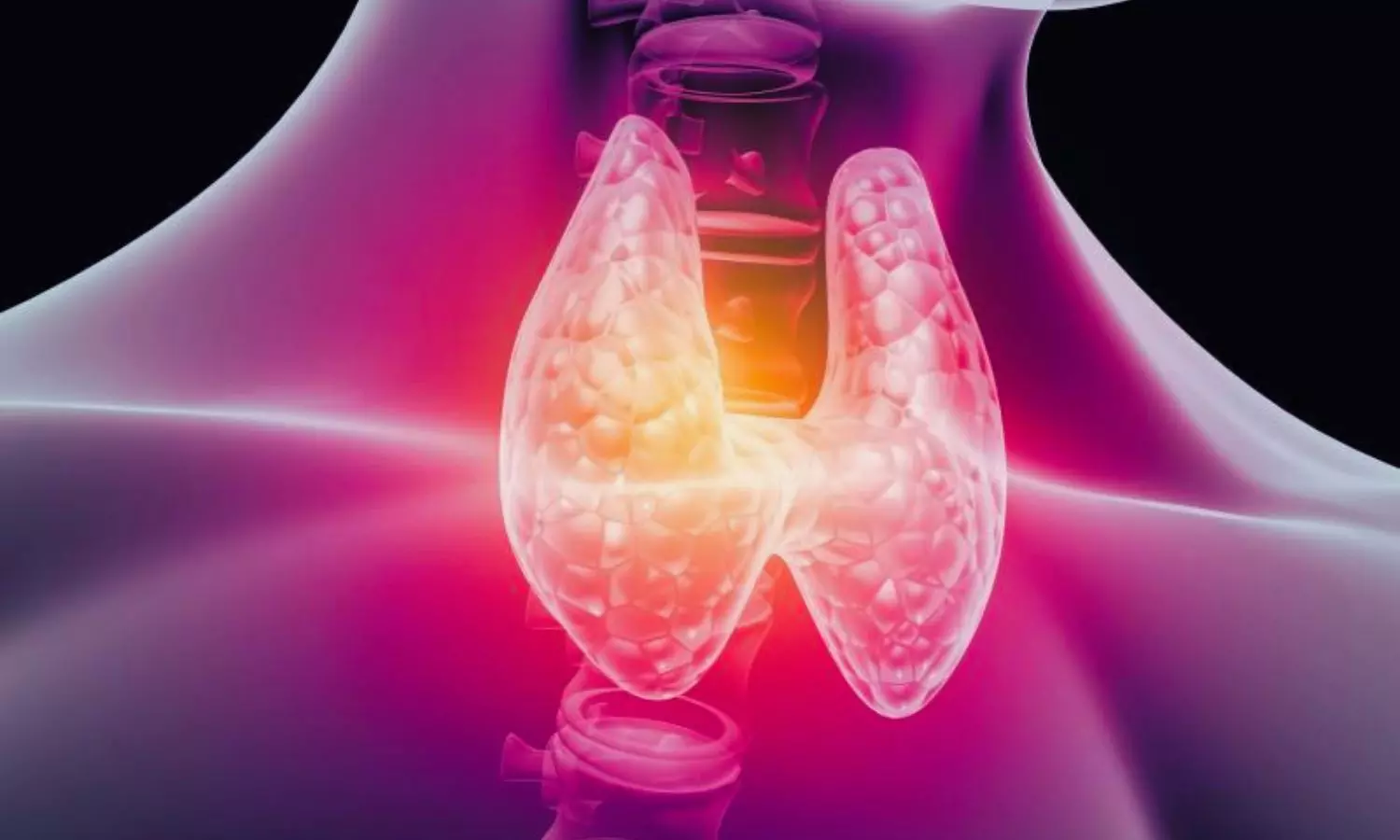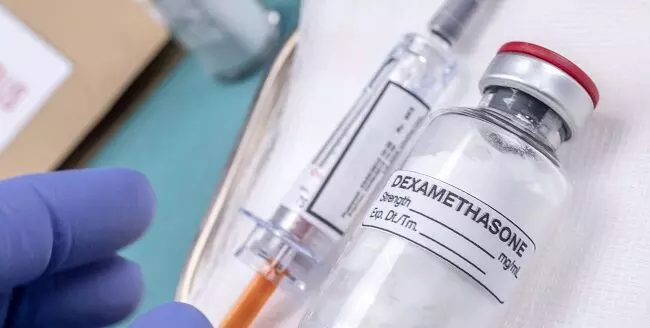Contraction inhibitors after 30 weeks have no effect on baby’s health, study shows
Powered by WPeMatico
Powered by WPeMatico
Powered by WPeMatico

Jaipur: A senior nursing officer of a state cancer institute in Rajasthan’s Jaipur was allegedly assaulted by a woman security guard and female staffers who have accused him of inappropriate behaviour, an official said.
According to the PTI report, officials said that the incident took place on Saturday when the guard caught senior nursing officer Mahesh Gupta by his collar and dragged him out of his chamber.
Some female staff members then surrounded him and took him outside, where they slapped him, they said.
Also Read:2 Nursing Officers enter Rajasthan Hospital armed, Threaten Medical Officer; Suspended
Dr Sandeep Jasuja, hospital superintendent, said an inquiry committee had been set up after both sides filed complaints against each other at his office on Monday, reports PTI.
In response to the incident, the hospital administration has also lodged a police complaint in the matter, he added.
Powered by WPeMatico

Lucknow: The Uttar Pradesh government, aiming to expedite the reimbursement claims process for hospitals empanelled under the Ayushman Bharat scheme, has requested government hospitals across the state to submit the names of postgraduate (PG) doctors who may be willing to volunteer as medical auditors.
These medical auditors will be responsible for reviewing and approving claims from hospitals once treatments for Ayushman Bharat beneficiaries are completed. The auditors will work on an incentive-based payment structure, receiving compensation for each claim they approve. The State Agency will make these payments for Comprehensive Health and Integrated Services (SACHIS), which oversees the operations of hospitals under the Ayushman Bharat scheme in the state. The work can be carried out through a work-from-home arrangement. This flexible option will encourage more doctors to participate in the auditing process.
Also Read: Rs 1.21 lakh Crore claims pending under Ayushman Bharat, reveals RTI
According to Hindustan Times, “The work of a medical auditor is done via online portal hence, the volunteer doctors can do it from their workplace or from home as well,” said Dr AP Singh, GM Medical Management, in a letter to all the superintendents of the government hospitals.
The move is part of an ongoing effort to streamline the reimbursement process under the Ayushman Bharat scheme, which aims to provide free healthcare coverage of up to Rs. 5 lakh for each beneficiary family. Uttar Pradesh currently has 5,854 hospitals impaneled with the Ayushman Bharat scheme. Over the past 30 days, SACHIS has cleared claims amounting to Rs. 407 crores for impaneled hospitals under the scheme.
Also Read: Rs 562.4 crore fake claims under AB-PMJAY: 1,114 Hospitals de-empanelled, 549 suspended
Medical dialogues had previously reported that, according to the National Anti-Fraud Unit (NAFU) investigation, out of Rs 6.66 crore claims processed under the Ayushman Bharat-PM Jan Arogya Yojana (AB-PMJAY), nearly 2.7 lakh claims from private hospitals were found to be fraudulent.
Powered by WPeMatico

Scotland: A recent network meta-analysis has revealed significant age and sex differences in the efficacy of treatments for type 2 diabetes, offering valuable insights into optimizing treatment strategies for patients.
The study, published in the Journal of the American Medical Association (JAMA), found that SGLT2 inhibitors and GLP-1 receptor agonists were linked to a reduced risk of major adverse cardiovascular events (MACEs). An analysis of age-treatment interactions indicated that SGLT2 inhibitors provided greater cardiovascular protection in older individuals than in younger ones, even though the reductions in HbA1c were smaller. On the other hand, GLP-1 receptor agonists offered more significant cardioprotective benefits in younger individuals.
The researchers note that the efficacy of treatments for type 2 diabetes, including sodium-glucose cotransporter 2 (SGLT2) inhibitors, glucagon-like peptide-1 (GLP-1) receptor agonists, and dipeptidyl peptidase 4 (DPP4) inhibitors, in improving hyperglycemia and reducing the risk of major adverse cardiovascular events (MACEs) has been well-established. However, it remained unclear whether the effectiveness of these treatments varies with age or sex. In a recent study, Peter Hanlon, School of Health and Wellbeing, University of Glasgow, Glasgow, Scotland, and colleagues aimed to evaluate whether age or sex influences the efficacy of SGLT2 inhibitors, GLP-1 receptor agonists, and DPP4 inhibitors.
For this purpose, the researchers comprehensively searched the MEDLINE and Embase databases, along with US and Chinese clinical trial registries, for articles published from inception to November 2022. The search was updated in August 2024 to capture the latest trial results. Two reviewers carefully screened randomized clinical trials comparing SGLT2 inhibitors, GLP-1 receptor agonists, or DPP4 inhibitors against a placebo or active comparator in adults with type 2 diabetes. Using multilevel network meta-regression models, they extracted individual participants and aggregated data to assess age-treatment and sex-treatment interactions. The study’s primary outcomes were hemoglobin A1c (HbA1c) levels and major adverse cardiovascular events.
Key Findings:
• Of the 601 eligible trials identified, 592 trials with 309,503 participants reported HbA1c data and 23 trials with 168,489 participants reported major adverse cardiovascular events (MACEs).
• Individual participant data were obtained for 103 trials, including 103 reporting HbA1c and six reporting MACEs.
• SGLT2 inhibitors (versus placebo) showed less HbA1c lowering with increasing age for all therapy types:
• Monotherapy: Absolute reduction (AR) of 0.24% per 30-year increment in age.
• Dual therapy: AR of 0.17% per 30-year increment in age.
• Triple therapy: AR of 0.25% per 30-year increment in age.
• GLP-1 receptor agonists were associated with greater HbA1c lowering with increasing age for monotherapy and dual therapy, but not for triple therapy:
• Monotherapy: AR of -0.18% per 30-year increment in age.
• Dual therapy: AR of -0.24% per 30-year increment in age.
• Triple therapy: AR of 0.04% per 30-year increment in age.
• DPP4 inhibitors showed slightly better HbA1c lowering with increasing age for dual therapy but no significant effect for monotherapy or triple therapy:
• Dual therapy: AR of -0.09% per 30-year increment in age.
• Monotherapy: AR of -0.08% per 30-year increment in age.
• Triple therapy: AR of -0.01% per 30-year increment in age.
• The relative reduction in MACEs with SGLT2 inhibitors was greater in older participants than younger ones (hazard ratio of 0.76 per 30-year increment in age).
• The relative reduction in MACEs with GLP-1 receptor agonists was less in older participants than younger ones (hazard ratio of 1.47 per 30-year increment in age).
• There was no consistent evidence for sex × treatment interactions using SGLT2 inhibitors and GLP-1 receptor agonists.
“The findings showed that recent glucose-lowering medications proved effective across various age and sex groups. Specifically, sodium-glucose cotransporter 2 inhibitors offered greater cardiovascular protection in older individuals than younger ones,” the researchers concluded.
Reference:
Hanlon P, Butterly E, Wei L, et al. Age and Sex Differences in Efficacy of Treatments for Type 2 Diabetes: A Network Meta-Analysis. JAMA. Published online February 03, 2025. doi:10.1001/jama.2024.27402
Powered by WPeMatico

Taiwan: A recent cohort study has highlighted the potential benefits of combining glucagon-like peptide-1 receptor agonists (GLP-1 RAs) with sodium-glucose cotransporter-2 inhibitors (SGLT2i) in individuals diagnosed with atherosclerotic cardiovascular disease (ASCVD) and heart failure (HF).
“The findings revealed that in patients with ASCVD and heart failure, the addition of GLP-1 RAs to SGLT2i was associated with a 28% reduction in one-year mortality (HR: 0.72) and a 22% decrease in hospitalization rates (HR: 0.78) compared to SGLT2i alone. Also, the risk of heart failure exacerbations declined by 23% (HR: 0.77),” the researchers reported in European Heart Journal – Cardiovascular Pharmacotherapy. The combination therapy demonstrated consistent benefits across different heart failure subtypes and comorbid conditions.
The researchers note that managing patients with ASCVD and HF remains a significant clinical challenge. Both SGLT2 inhibitors and GLP-1 receptor agonists have demonstrated cardiovascular benefits individually, yet the potential advantages of their combined use remain unclear. To address this gap, Yu-Min Lin, Division of Cardiology, Department of Internal Medicine, Chi Mei Medical Centre, Chiali, Tainan, Taiwan, and colleagues assessed whether adding GLP-1 RAs to SGLT2i therapy could enhance outcomes in patients with ASCVD and HF.
For this purpose, the researchers conducted a retrospective observational study using the TriNetX database to evaluate patients with ASCVD and HF who initiated either GLP-1 RA alongside SGLT2i or SGLT2i alone between August 1, 2016, and September 30, 2024. Out of 2,797,317 identified patients, 96,051 met the inclusion criteria. Following propensity score matching, 5,272 patients were analyzed in each group. The primary outcomes assessed one-year mortality or hospitalization, while secondary outcomes included individual assessments of mortality, hospitalization, and heart failure exacerbation (HFE).
The key findings of the study were as follows:
“The findings revealed that in patients with ASCVD and HF, the addition of GLP-1 RA to SGLT2i is associated with reduced one-year mortality and hospitalization, highlighting the need for further research across diverse populations,” the researchers concluded.
Reference:
Chen, S., Wu, J., Liao, K., & Lin, Y. Prognostic Benefit of GLP-1 RA Addition to SGLT2i in Patients with ASCVD and Heart Failure: A Cohort Study. European Heart Journal – Cardiovascular Pharmacotherapy. https://doi.org/10.1093/ehjcvp/pvaf014
Powered by WPeMatico

Sudan: A recent meta-analysis has shed light on thyroid function abnormalities in individuals with sickle cell disease (SCD), revealing a tendency towards elevated thyroid-stimulating hormone (TSH) levels. The research showed that individuals with sickle cell disease exhibited significantly higher thyroid-stimulating hormone levels than controls (SMD = 1.184).
“While T3, T4, and free thyroid hormone levels showed a declining trend, the differences were not statistically significant. Hypothyroidism was detected in 4.9% of SCD patients, while 8.7% had subclinical hypothyroidism, highlighting the importance of routine thyroid function monitoring in this population,” the researchers reported in Thyroid Research.
Sickle cell disease, a genetic blood disorder characterized by abnormal hemoglobin, is known to impact multiple organ systems due to chronic anemia, inflammation, and vascular complications. Thyroid function, which plays a critical role in metabolism and overall health, appears to be influenced by the physiological challenges associated with SCD.
Sickle cell disease (SCD), a genetic blood disorder characterized by abnormal hemoglobin, affects multiple organ systems due to chronic anemia, inflammation, and vascular complications. Among its potential impacts, thyroid function—essential for metabolism and overall health—appears to be influenced by the physiological challenges associated with SCD.
In recent years, there has been growing awareness of endocrine dysfunction in both pediatric and adult patients with SCD. Thyroid disorders in this population can have serious clinical consequences, including growth retardation and cognitive impairment. However, data on the prevalence and spectrum of thyroid abnormalities in individuals with SCD remain limited, highlighting the need for further research and regular thyroid function monitoring in this group.
Against the above background, Sagad O. O. Mohamed, Faculty of Medicine, University of Khartoum, Alqasr Avenue, Khartoum, Sudan, and colleagues aimed to offer a comprehensive overview and analysis of thyroid function abnormalities in individuals with sickle cell disease.
For this purpose, the researchers conducted a thorough search across Medline/PubMed, Google Scholar, the World Health Organization Virtual Health Library Regional Portal, and ScienceDirect, adhering to the Preferred Reporting Items for Systematic Reviews and Meta-Analyses (PRISMA) guidelines. Pooled prevalence and standardized mean difference (SMD) estimates, were calculated using Comprehensive Meta-Analysis Software version 3.3.
The following were the key findings of the study:
This review indicates that patients with sickle cell disease tend to have higher TSH levels compared to the general population, especially in older age groups. Some SCD patients may develop thyroid abnormalities, most commonly subclinical hypothyroidism.
“Although these issues are not widespread, regular monitoring of thyroid function is important to prevent the progression to overt hypothyroidism. Such vigilance can help improve the quality of life and clinical outcomes for these patients. Further research is needed to better understand the mechanisms and factors contributing to thyroid dysfunction in individuals with SCD,” the researchers concluded.
Reference:
Mohamed, S.O.O., Ahmed, H., Mohammednoor, M.A.H. et al. Thyroid function abnormalities in individuals with sickle cell disease: a meta-analysis. Thyroid Res 18, 3 (2025). https://doi.org/10.1186/s13044-024-00220-9
Powered by WPeMatico

A ‘chasm of misunderstanding and miscommunication’ is often experienced between clinicians and patients, leading to autoimmune diseases such as lupus and vasculitis being wrongly diagnosed as psychiatric or psychosomatic conditions, with a profound and lasting impact on patients, researchers have found.
A study involving over 3,000 participants-both patients and clinicians – found that these misdiagnoses (sometimes termed “in your head” by patients) were often associated with long term impacts on patients’ physical health and wellbeing and damaged trust in healthcare services.
The researchers are calling for greater awareness among clinicians of the symptoms of such diseases, which they recognise can be difficult to diagnose, and for more support for patients.
Autoimmune rheumatic diseases such as rheumatoid arthritis, lupus and vasculitis are chronic inflammatory disorders that affect the immune system and can damage organs and tissues throughout the body. They can be very difficult to diagnose as people report a wide range of different symptoms, many of which can be invisible, such as extreme fatigue and depression.
Dr Melanie Sloan from the University of Cambridge led a study exploring patient-reported experiences from two large groups, each of over 1,500 patients, and in-depth interviews with 67 patients and 50 clinicians. The results are published today in Rheumatology.
Patients who reported that their autoimmune disease was misdiagnosed as psychosomatic or a mental health condition were more likely to experience higher levels of depression and anxiety, and lower mental wellbeing. For example, one patient with multiple autoimmune diseases said: “One doctor told me I was making myself feel pain and I still can’t forget those words. Telling me I’m doing it to myself has made me very anxious and depressed.”
More than 80% said it had damaged their self-worth and 72% of patients reported that the misdiagnosis still upset them, often even decades later. Misdiagnosed patients also reported lower levels of satisfaction with every aspect of medical care and were more likely to distrust doctors, downplay their symptoms, and avoid healthcare services. As one patient reported, it “has damaged my trust and courage in telling doctors very much. I even stopped taking my immunosuppressive medicine because of those words”.
Following these types of misdiagnoses, patients often then blamed themselves for their condition, as one individual described: “I don’t deserve help because this is a disease I’ve brought on myself. You go back to those initial diagnosis, you’ve always got their voices in your head, saying you’re doing this to yourself. You just can’t ever shake that. I’ve tried so hard.”
One patient described the traumatising response their doctor’s judgement had on them: “When a rheumatologist dismissed me I was already suicidal, this just threw me over the edge. Thankfully I am terrible at killing myself, it’s so much more challenging than you think. But the dreadful dismissiveness of doctors when you have a bizarre collection of symptoms is traumatizing and you start to believe them, that it’s all in your head.”
Dr Melanie Sloan, from the Department of Public Health and Primary Care at the University of Cambridge, said: “Although many doctors were intending to be reassuring in suggesting a psychosomatic or psychiatric cause for initially unexplainable symptoms, these types of misdiagnoses can create a multitude of negative feelings and impacts on lives, self-worth and care. These appear to rarely be resolved even after the correct diagnoses. We must do better at helping these patients heal, and in educating clinicians to consider autoimmunity at an earlier stage.”
Clinicians highlighted how hard it was to diagnose autoimmune rheumatic diseases and that there was a high risk of misdiagnosis. Some doctors said they hadn’t really thought about the long-term problems for patients, but others talked about the problems in regaining trust, as one GP from England highlighted: “They lose trust in anything that anyone says…you are trying to convince them that something is OK, and they will say yes but a doctor before said that and was wrong.”
However, there was evidence that this trust can be rebuilt. One patient described having been “badly gaslit by a clinician”, but that when they told the clinician this, “She was shocked and had no idea … She was great. Took it on the chin. Listened and heard. Apologised profusely…For me, the scar of the original encounter was transformed into something much more positive.”
Mike Bosley, autoimmune patient and co-author on the study, said: “We need more clinicians to understand how a misdiagnosis of this sort can result in long-standing mental and emotional harm and in a disastrous loss of trust in doctors. Everyone needs to appreciate that autoimmune conditions can present in these unusual ways, that listening carefully to patients is key to avoiding the long-lasting harm that a mental health or psychosomatic misdiagnosis can cause.”
The study authors recommend several measures for improving support for patients with autoimmune rheumatological diseases. These are likely to apply for many other groups of patients with chronic diseases that are often misunderstood and initially misdiagnosed.
They propose that clinicians should talk about previous misdiagnoses with patients, discuss and empathise with their patients as to the effects on them, and offer targeted support to reduce the long-term negative impacts. Health services should ensure greater access to psychologists and talking therapies for patients reporting previous misdiagnoses, which may reduce the long-term impact on wellbeing, healthcare behaviours, and patient-doctor relationships. Education may reduce misdiagnoses by encouraging clinicians to consider systemic autoimmunity when they assess patients with multiple, seemingly unconnected, physical and mental health symptoms.
Professor Felix Naughton, from the Lifespan Health Research Centre at the University of East Anglia, said: “Diagnosing autoimmune rheumatic diseases can be challenging, but with better awareness among clinicians of how they present, we can hopefully reduce the risk of misdiagnoses. And while there will unfortunately inevitably still be patients whose condition is not correctly diagnosed, with the correct support in place, we may be able to lessen the impact on them.”
Reference:
Sloan, M, et al. “I still can’t forget those words”: mixed methods study of the persisting impacts of psychosomatic and psychiatric misdiagnoses. Rheumatology; 3 Mar 2025; DOI: 10.1093/rheumatology/keaf115
Powered by WPeMatico

Researchers in a new study has found that the administration of DXM after unilateral total knee arthroplasty (TKA) can effectively reduce postoperative pain and suppress the occurrence of postoperative nausea and vomiting (PONV) without affecting postprandial blood glucose (PBG) in patients with type 2 diabetes.Additionally, the preoperative level of glycated hemoglobin can accurately predict PBG. The study was conducted by Chen J. and colleagues published in the journal of Orthopaedic Surgery. This study aimed to assess the effect of DXM on PBG and postoperative recovery in patients with diabetes mellitus undergoing TKA.
This was a retrospective analysis of 285 patients with type 2 diabetes and advanced knee osteoarthritis who were operated on bilaterally at the Joint Surgery Center of Peking University Third Hospital from January 2019 to November 2022. After exclusion and inclusion criteria, 161 patients were included in this study. The patients were distributed into two groups: whether they received continuous intravenous administration of DXM for three days after the surgery or not.
DXM group (n = 66)
Non-DXM group (n = 95)
All other perioperative treatments and medications were the same for both groups. The investigators assessed postoperative pain scores, the incidence of postoperative nausea and vomiting (PONV), length of hospital stay, PBG levels, and other clinical data.
Results
There was no difference between the DXM and non-DXM groups for any preoperative characteristics. Key findings were as follows:
PBG Levels: The average of PBG levels was comparable (10.84 mg/dL vs. 11.05 mg/dL), and the rate of patients with PBG larger than 200 mg/dL was comparative (43.2% vs. 43.9%).
Pain Scores: Comparison of postoperative VAS scores between DXM and non-DXM groups, the latter had higher values (2.48 vs. 3.67).
PONV Rates: The cumulative incidence of PONV was significantly less in the DXM group (16% vs. 40%).
Prediction of PBG: Preoperative glycated hemoglobin levels have been shown to predict the actual PBG.
Early postoperative complications were not significantly different between groups.
The study authors concluded that dexamethasone significantly reduces pain and PONV without having a clinically relevant effect on blood glucose levels in patients with type 2 diabetes undergoing TKA. Preoperative glycated hemoglobin levels are an accurate predictor of perioperative blood glucose trends. These findings highlight the potential use of DXM as a useful adjunct to ERAS protocols in diabetic patients undergoing joint replacement surgeries.
Reference:
Powered by WPeMatico

Turkiye: Researchers have found in a new study that the use of 5.25% sodium hypochlorite (NaOCl) before resin infiltration or resin varnish did not impact microhardness, surface roughness, DIAGNOdent Pen readings, or microleakage. However, resin infiltration outperformed resin varnish in reducing microleakage and DIAGNOdent Pen scores, regardless of NaOCl application. The findings were published online in the Journal of Dentistry on February 20, 2025.
Enamel demineralization occurs when hydroxyapatite (HA) crystals dissolve due to acidic pH, leading to the loss of calcium and phosphate ions. This process, driven by cariogenic bacteria digesting carbohydrates, increases hydrogen ion concentration in plaque, which diffuses through enamel pores and affects HA crystals in subsurface regions.
Against the above background, Bengü Doğu Kaya, Marmara University Faculty of Dentistry, Department of Restorative Dentistry, Istanbul, Türkiye, and colleagues aimed to evaluate the effect of 5.25% NaOCl application before resin infiltration and resin varnish on microhardness, surface roughness, and DIAGNOdent Pen values in the treatment of white spot lesions (WSLs) through an in vitro study.
For this purpose, the researchers created artificial initial caries lesions in 160 human enamel samples. They divided them into five groups: resin infiltration (ICON), NaOCl + ICON, resin varnish (Clinpro XT), NaOCl + Clinpro XT, and a negative control. Thermocycling aging was performed with 5,000 cycles between 5-55°C (N=32, n=16 for aging subgroups).
Surface roughness (Ra), Vicker’s microhardness (VHN), and DIAGNOdent Pen (DDP) values were recorded at baseline, after demineralization, post-treatment, and post-thermal aging. Micro-CT analysis, microleakage assessment, and SEM imaging were conducted after treatment and aging. Statistical analysis involved Robust ANOVA, Pearson’s chi-square, and McNemar tests.
Key Findings
In conclusion, the researchers found that applying 5.25% NaOCl before resin infiltration or fluoride-containing resin varnish did not significantly affect microhardness, surface roughness, DIAGNOdent Pen values, or microleakage. All treatment procedures showed improved outcomes compared to demineralized enamel samples, but NaOCl pre-treatment did not enhance or compromise the results. Resin infiltration exhibited superior performance over resin varnish in reducing microleakage and achieving better DIAGNOdent Pen scores, regardless of NaOCl application.
“These findings suggest that while white spot lesions should be treated, NaOCl pre-treatment may not be necessary, simplifying clinical protocols without compromising treatment efficacy,” the researchers wrote.
Reference:
Özen, A. M., Kaya, B. D., Atalı, P. Y., & Türkmen, C. (2025). Evaluation of NaOCl application prior to resin infiltrant or fluoride-containing resin varnish in the treatment of white spot lesions: An in vitro study. Journal of Dentistry, 105641. https://doi.org/10.1016/j.jdent.2025.105641
Powered by WPeMatico
